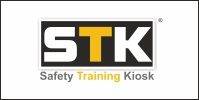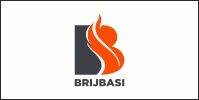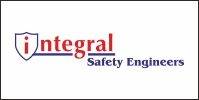
This incident underscores the urgent need to strictly prohibit hot work activities in such hazardous environments and to enforce a mandatory hot work permit system.
The tragic fire incident in a gaming zone in Rajkot on May 25, 2024, has highlighted several critical issues that need urgent attention to prevent future occurrences. Based on the information available from news sources and my extensive experience in fire safety management, here are the key causes of the incident and recommendations to mitigate such risks.
Causes of the Fire Incident:
- Excessive Fire Load in Constrained Space
The gaming zone had an excessive fire load within a congested area, significantly increasing the risk of a rapid and uncontrollable spread of fire. The accumulation of combustible materials in a confined space is a recipe for disaster.
- Presence of Highly Combustible and Toxic Materials
The premises contained highly combustible, inflammable, and toxic carcinogenic materials. These substances not only facilitate the rapid spread of fire but also pose severe health risks due to the release of toxic fumes during combustion.
- Congested Area with Obstructive Combustibles
The gaming zone was located in a very congested area, surrounded by combustible materials that hindered easy movement and evacuation. Such an environment severely hampers firefighting efforts and evacuation procedures.
- Blocked and Narrow Exit Routes
Exit routes were narrow and obstructed by combustible materials, preventing quick and safe evacuation. This critical oversight can lead to tragic outcomes during emergencies when every second counts.
- High Electrical Load
The facility was subject to a high electrical load necessary for its operations. Overloading electrical circuits can lead to short circuits and electrical fires, a common hazard in such environments.
- Overcrowding with Vulnerable Inhabitants
The area was overcrowded, with too many inhabitants, especially children, within a small space. Such congested live loads make evacuation difficult and increase the risk of casualties.
- Inadequate Firefighting Arrangements
There were poor firefighting arrangements in place. Effective firefighting infrastructure is crucial in controlling fires at their inception and preventing them from escalating.
- Lack of Qualified Emergency Staff
The facility lacked qualified staff capable of efficiently handling emergency situations.
Trained personnel are essential for implementing emergency procedures and ensuring a swift and organized response.
- Negligent Management
The management was least bothered about fire and life safety measures. This negligent attitude towards safety protocols is a significant contributor to such tragic incidents.
Recommendations for Preventing Future Fire Incidents:
- Regulate Fire Loads
Implement strict regulations to control the fire load within confined spaces. Regular inspections should ensure compliance with these regulations.
- Remove Hazardous Materials
Eliminate the presence of highly combustible, inflammable, and toxic materials within the premises. Use fire-resistant materials wherever possible.
- Ensure Unobstructed Movement
Design layouts that allow easy movement and are free of obstructive combustible materials. This facilitates efficient evacuation and firefighting efforts.
- Maintain Clear and Adequate Exit Routes
Ensure exit routes are wide, clearly marked, and free of obstructions. Regularly inspect these routes to maintain their accessibility.
- Manage Electrical Loads Safely
Implement electrical load management systems to prevent overloading and ensure the safe operation of electrical systems. Regular maintenance and inspections are crucial.
- Control Occupant Density
Limit the number of occupants, especially in small areas, to avoid overcrowding. Ensure that the number of inhabitants is within the safe capacity of the facility.
- Enhance Firefighting Infrastructure
Invest in comprehensive firefighting arrangements, including extinguishers, sprinkler systems, and alarm systems. Regularly maintain and test these systems to ensure their functionality.
- Employ Qualified Emergency Staff
Hire and train qualified staff to handle emergency situations efficiently. Regular drills and training sessions should be conducted to keep staff prepared.
- Enforce Management Accountability
Hold management accountable for implementing and maintaining fire and life safety measures. Regular audits and strict penalties for non-compliance can enforce this accountability.
- Prohibit Hazardous Activities
Prohibit any hazardous activities, such as welding, in areas with serious potential hazards. Implement strict safety protocols and oversight for such activities.
The recent fire incident in Rajkot is a stark reminder of the need for stringent fire safety measures. By addressing these key areas, we can significantly reduce the risk of such tragedies and enhance the safety and well-being of all occupants. It is essential for industry leaders, facility managers, and regulatory authorities to collaborate and implement these recommendations to create a safer environment for everyone.


















































